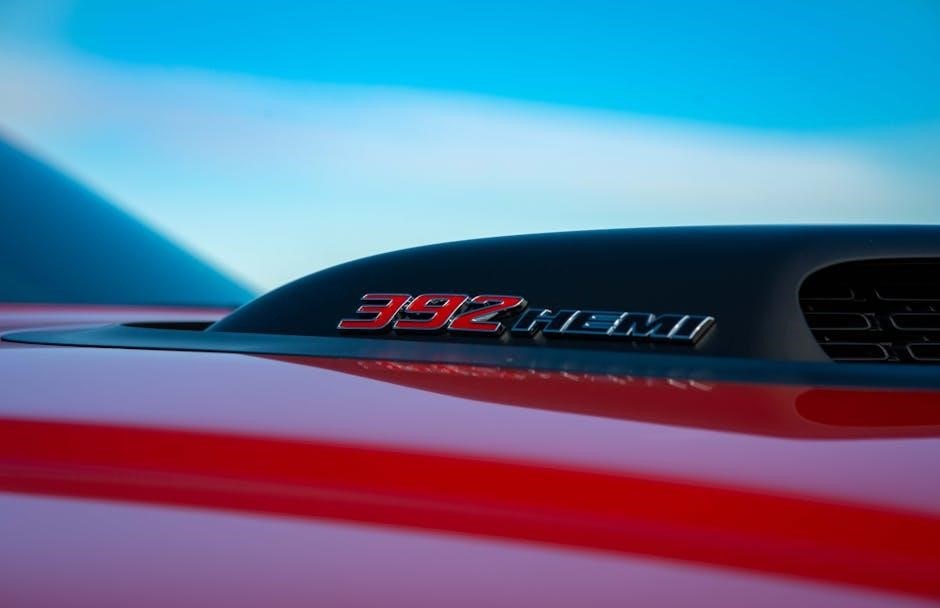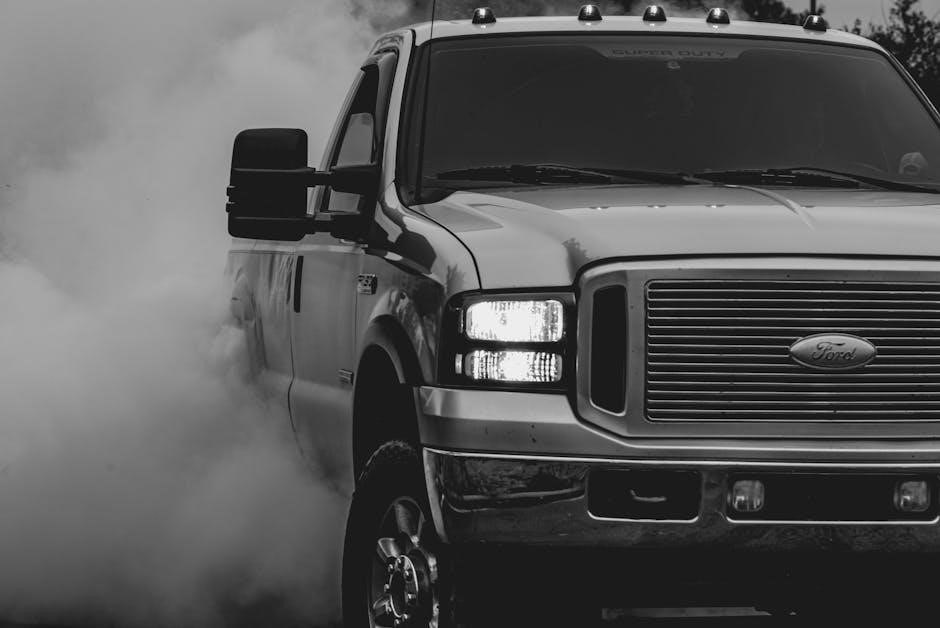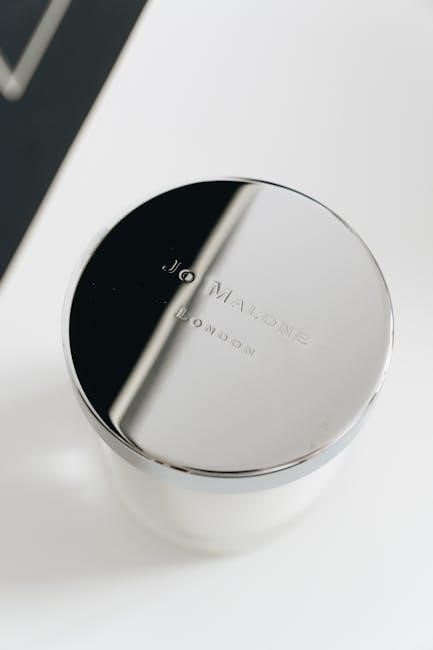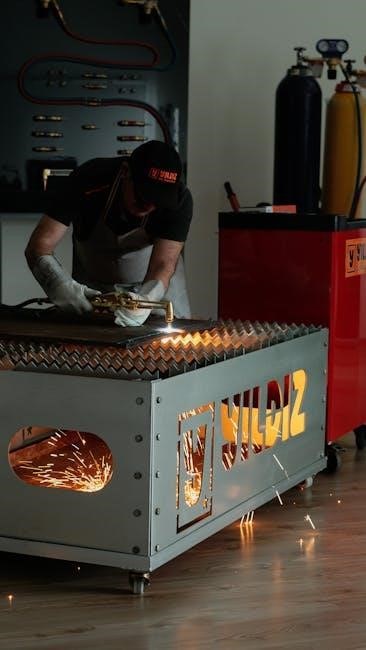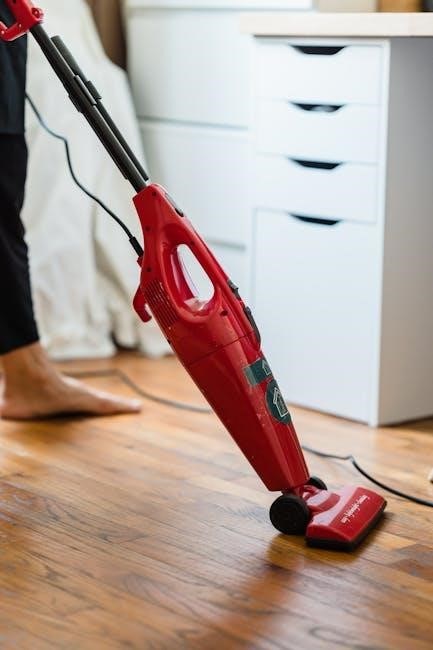The Hobbit PDF offers a convenient digital reading experience, preserving J.R.R. Tolkien’s timeless tale of adventure and fantasy. This format ensures accessibility across modern devices, making Bilbo Baggins’ epic journey easily accessible to readers worldwide. The PDF version maintains the original story’s charm while providing a portable and readable option for fans of Middle-earth’s enchanting world.
Overview of the Book and Its Digital Format
The Hobbit is a timeless fantasy novel by J.R.R. Tolkien, published in 1937, recounting Bilbo Baggins’ quest with dwarves to reclaim their treasure. The digital format, particularly the PDF version, offers a convenient and accessible way to enjoy this classic tale. Available in formats like PDF, EPUB, and FB2, the book is easily readable on modern devices. The PDF version is especially popular for its high-quality text and illustrations, with files typically ranging from 1.1 MB to 347 MB, ensuring compatibility across e-readers, tablets, and smartphones. This format has made The Hobbit more accessible to a global audience, blending tradition with modern technology seamlessly.
Importance of the PDF Version for Modern Readers
The PDF version of The Hobbit is highly valued for its convenience and accessibility. It allows readers to enjoy Tolkien’s classic tale on modern devices like e-readers, tablets, and smartphones. The format preserves the book’s original charm, with high-quality text and illustrations. Adjustable font sizes and night mode features enhance readability, catering to diverse preferences. Additionally, the PDF’s compatibility across devices ensures that Bilbo Baggins’ adventure remains accessible and engaging for a new generation of readers, blending tradition with contemporary technology seamlessly.

Background of “The Hobbit”
The Hobbit, published in 1937, is J.R.R. Tolkien’s precursor to The Lord of the Rings. It introduces Middle-earth, a richly detailed fantasy world filled with unique races and languages, setting the stage for Tolkien’s epic legendarium.
Authorship and Publication History
The Hobbit, authored by J.R.R. Tolkien, was first published in 1937 by George Allen & Unwin. Tolkien, a philologist and university professor, crafted the story as a precursor to his epic Lord of the Rings trilogy. The book’s initial success led to widespread acclaim, solidifying its place in fantasy literature. Its publication marked the beginning of Middle-earth’s lore, enchanting readers with its unique world-building and linguistic richness, and remains a cornerstone of Tolkien’s literary legacy.
The Book’s Place in J.R.R. Tolkien’s Middle-earth Legendarium
The Hobbit serves as the foundational story within J.R.R. Tolkien’s expansive Middle-earth legendarium. It introduces key locations like the Shire, Mirkwood, and Erebor, setting the stage for the events of The Lord of the Rings. The book bridges the ancient histories of Middle-earth with the epic quest of Bilbo Baggins, creating a narrative bridge between Tolkien’s earlier myths and the later trilogy. This connection enriches the lore, making The Hobbit essential for understanding the broader tapestry of Middle-earth’s history and cultures.
Popularity and Cultural Impact
The Hobbit has become a cultural phenomenon, captivating readers worldwide since its publication in 1937. Its enduring popularity stems from its rich storytelling, memorable characters, and the immersive world of Middle-earth. The book has inspired countless adaptations, including films, games, and artwork, cementing its place in popular culture. Its themes of adventure, courage, and friendship resonate universally, making it a beloved classic across generations. The PDF format further enhances its accessibility, ensuring Tolkien’s masterpiece continues to enchant readers in the digital age.

Digital Formats of “The Hobbit”
The Hobbit is widely available in various digital formats, including PDF, EPUB, and FB2, ensuring easy access across devices. These formats preserve the book’s original charm while offering portability and convenience for modern readers.
Availability of “The Hobbit” in PDF
The Hobbit in PDF format is widely accessible through various online platforms, including official publishers, e-book stores, and digital libraries. Readers can download or access the PDF version from sources like Google Play Books, Amazon Kindle, and the official J.R.R. Tolkien website. Additionally, platforms such as Litres and Internet Archive offer the book in multiple digital formats, ensuring compatibility with e-readers and mobile devices. The PDF version is particularly popular for its clarity and portability, making it a preferred choice for fans of Middle-earth’s adventures.
Advantages of the PDF Format for Reading
The PDF format offers numerous benefits for reading The Hobbit. It maintains the original layout, ensuring that illustrations and text formatting remain intact. PDFs are universally compatible across all devices, allowing seamless reading on e-readers, tablets, and smartphones. Additionally, PDFs support adjustable font sizes and night modes, enhancing readability. The format also preserves the book’s visual elements, such as Alan Lee’s illustrations, making it a visually appealing choice for fans. Furthermore, PDFs are easily sharable and portable, providing a convenient reading experience.
Where to Download or Access “The Hobbit PDF” Legally
To access The Hobbit PDF legally, consider purchasing it from authorized platforms like Amazon Kindle, Google Play Books, or Apple Books. These services offer the book in various digital formats, including PDF and ePub. Additionally, e-book platforms like Kobo and Litres provide legitimate downloads. Always ensure to purchase or access the book through licensed sources to support the author and avoid unauthorized versions. This guarantees a high-quality reading experience while respecting copyright laws.

Plot Summary and Key Themes
The Hobbit PDF follows Bilbo Baggins’ journey with dwarves to reclaim their treasure, facing trolls, dragons, and moral dilemmas. Themes of adventure, courage, and friendship shine through Bilbo’s transformation from a reluctant hobbit to a confident hero, exploring self-discovery and the power of unity in overcoming adversity.
Main Plot and Quest in “The Hobbit”
The Hobbit PDF details Bilbo Baggins’ unexpected adventure. Recruited by Gandalf and a company of dwarves led by Thorin Oakenshield, Bilbo embarks on a quest to reclaim Erebor from the dragon Smaug. Their journey through treacherous landscapes includes encounters with trolls, goblins, and giant spiders. The discovery of the One Ring by Bilbo proves pivotal, setting the stage for future events. The central plot revolves around courage, wit, and the enduring spirit of fellowship in the face of overwhelming odds, as Bilbo evolves from a timid hobbit to a brave and resourceful hero.
Themes of Adventure, Courage, and Friendship
The Hobbit PDF explores universal themes of adventure, courage, and friendship. Bilbo Baggins’ journey from a quiet hobbit-hole to the dangers of Middle-earth exemplifies personal growth and bravery. The bonds formed between Bilbo and the dwarves highlight the power of unity and loyalty. Through encounters with trolls, goblins, and dragons, the story showcases how courage can emerge in unexpected ways. These themes, woven into the narrative, make The Hobbit a timeless tale of overcoming adversity and the enduring strength of friendship, resonating with readers of all ages in its digital format.
Symbolism and Moral Lessons in the Story
The Hobbit PDF is rich in symbolism, with the ring representing power and corruption, while Bilbo’s journey symbolizes personal growth. The story teaches moral lessons about greed, responsibility, and the importance of humility. The dragon Smaug embodies greed, while Bilbo’s cleverness and honesty highlight the value of integrity. These themes, preserved in the digital format, remind readers of the enduring importance of ethical choices and the triumph of wisdom over brute force, making The Hobbit a timeless moral guide as much as an exciting adventure.

Major Characters in “The Hobbit”
Bilbo Baggins, a reluctant hobbit hero, joins Gandalf the Grey, a wise wizard, and Thorin Oakenshield, the determined dwarf leader, on a quest. The dragon Smaug embodies evil, testing their resolve in the PDF edition.
Bilbo Baggins: The Reluctant Hero
Bilbo Baggins, a comfort-loving hobbit, is thrust into an unexpected adventure by Gandalf and the dwarves. In the PDF version, Bilbo’s transformation from a timid homebody to a courageous hero is vividly portrayed. His wit, resourcefulness, and unexpected bravery make him a beloved character. The digital format highlights his relatable journey, resonating with readers seeking adventure and personal growth, as Bilbo discovers his inner strength and becomes an unlikely hero in Tolkien’s timeless tale.
Gandalf the Grey: The Wise Wizard
Gandalf the Grey is the catalyst for Bilbo’s journey, displaying wisdom and foresight. In the PDF version, his role as a guide and mentor is emphasized, showcasing his deep understanding of Middle-earth’s perils. Gandalf’s presence adds depth to the narrative, as his counsel and magical interventions prove pivotal. The digital format highlights his enigmatic nature, making him a central figure in the quest, whose wisdom and power are essential to the dwarves’ and Bilbo’s success in reclaiming their treasure.
Thorin Oakenshield and the Company of Dwarves
Thorin Oakenshield leads the Company of Dwarves with unwavering determination, driven by the quest to reclaim Erebor. In the PDF version, his leadership and resolve are vividly portrayed, highlighting the dwarves’ resilience and unity. Their journey, marked by courage and hardship, underscores the themes of loyalty and heritage. The digital format captures the rich details of their culture, making Thorin and his companions memorable figures in Bilbo’s adventure, as they navigate treacherous landscapes and battle formidable foes.
The Dragon Smaug: The Primary Antagonist
Smaug, the fearsome dragon, serves as the primary antagonist in The Hobbit. His greed for treasure and dominance drives the plot, as he guards the riches of Erebor. The PDF version vividly portrays Smaug’s intelligence, cunning, and terrifying presence. His confrontations with Bilbo and the dwarves highlight his power and arrogance. Smaug’s downfall, though inevitable, underscores the themes of greed and the peril of unchecked ambition, making him a compelling and memorable adversary in Tolkien’s classic tale.
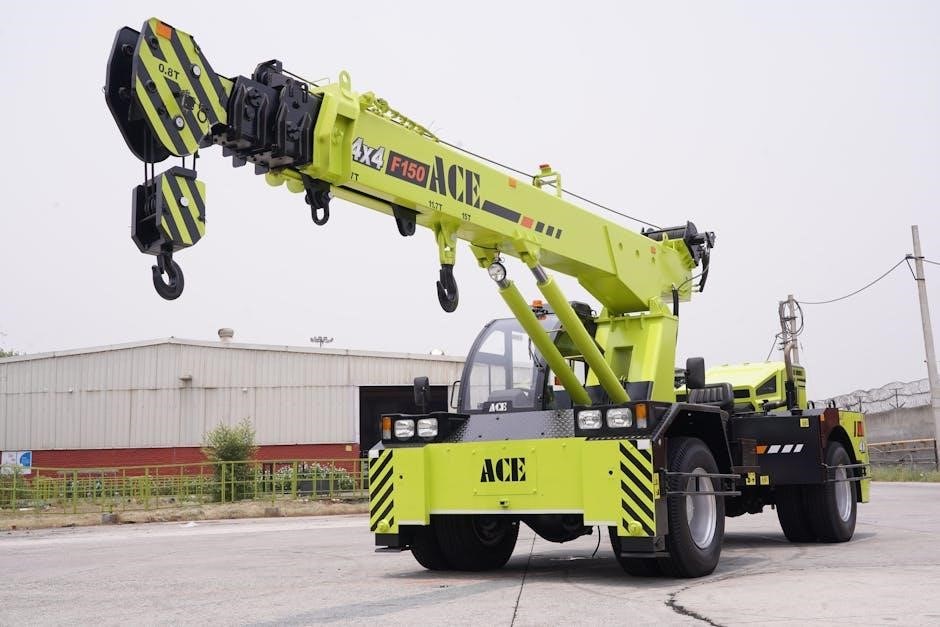
Reception and Reviews of “The Hobbit PDF”
The Hobbit PDF has received widespread acclaim for its enhanced readability and visually stunning presentation, making it a favorite among modern readers seeking a seamless digital experience.
Reader Feedback on the Digital Edition
Readers have praised the Hobbit PDF for its portability and clarity. Many appreciate the ability to adjust font sizes and access the story on multiple devices, enhancing their reading experience. The digital format has also been commended for maintaining the original artwork and typography, ensuring a visually appealing presentation. Fans of Middle-earth have expressed gratitude for the convenience of carrying the entire book in a single file, making it easier to revisit Bilbo’s adventures anytime, anywhere. Overall, the PDF edition has been well-received as a modern yet faithful adaptation of the classic tale.
Critical Analysis of the Book’s Structure and Style
Tolkien’s masterful storytelling in The Hobbit is marked by a clear, engaging narrative structure that balances action and description. The episodic format, with its carefully paced chapters, builds suspense and fosters a sense of adventure. Tolkien’s prose is both accessible and rich, blending formal language with colloquial tones to create a timeless appeal. The inclusion of songs, riddles, and dialogue in various dialects adds depth and authenticity to the world of Middle-earth. This style has been praised for its ability to immerse readers in the story while maintaining a clear and concise flow.
Comparisons with Other Editions (e.g., Hardback, Paperback)
The PDF version of The Hobbit offers distinct advantages over hardback and paperback editions, such as portability and adjustable font sizes. While physical copies provide a tactile reading experience, the PDF excels in convenience, allowing readers to carry the book on multiple devices. The digital format also ensures crisp text and consistent formatting, which can sometimes vary in printed editions. However, some readers prefer the sensory appeal of physical books, making the choice between formats a matter of personal preference. Both editions retain the timeless charm of Tolkien’s narrative.

Illustrations and Visual Elements
The Hobbit PDF features enchanting illustrations by Alan Lee, enhancing the narrative with vivid depictions of Middle-earth and its inhabitants, optimized for digital readers, bringing the story to life in stunning detail.
The Role of Artwork in the PDF Version
The artwork in The Hobbit PDF plays a crucial role in enhancing the storytelling experience. Alan Lee’s illustrations bring Middle-earth to life, offering vivid depictions of characters, landscapes, and events. These visuals help readers immerse themselves in Tolkien’s world, making the narrative more engaging. The PDF format ensures that the artwork is displayed clearly and vibrantly, preserving the original intent of the illustrations. This visual enrichment adds depth to the text, making the digital version a compelling choice for both new and returning readers.
Alan Lee’s Illustrations in the Enhanced Edition
Alan Lee’s illustrations in the enhanced PDF edition of The Hobbit are a masterful addition to Tolkien’s classic tale. Lee’s intricate and evocative artwork meticulously captures the essence of Middle-earth, from the Shire’s rolling hills to the grandeur of Erebor. His depictions of Bilbo, Gandalf, and the dwarves add layers of depth to the narrative, enriching the reading experience. The enhanced edition’s digital format ensures that Lee’s work is displayed with clarity and vibrancy, making it a standout feature for fans of both the book and its visual interpretations.
Visual Enhancements in the Digital Format
The digital format of The Hobbit PDF offers enhanced visual features, including adjustable font sizes and night mode for readability. The layout is optimized for e-readers and tablets, ensuring a seamless reading experience. Illustrations and artwork, such as those by Alan Lee, are displayed with clarity, enriching the narrative. Interactive elements and bookmarks further enhance navigation. The PDF’s visual enhancements make it a modern yet immersive way to engage with Tolkien’s timeless adventure, blending tradition with technological convenience for readers of all ages.

Legal and Ethical Considerations
The Hobbit PDF is protected by copyright, necessitating legal acquisition. Purchasing from authorized sources ensures compliance with licensing agreements and supports authors. Piracy violates intellectual property rights, leading to legal consequences and undermining the publishing industry. Ethical access promotes fair compensation for creators and maintains the integrity of literary works.
Copyright and Licensing of “The Hobbit PDF”
The Hobbit PDF is protected under international copyright laws, with rights held by J.R.R. Tolkien’s estate and publishers like HarperCollins. Licensing agreements ensure the digital version is legally distributed through authorized platforms, safeguarding the author’s intellectual property. These agreements govern how the PDF is shared, ensuring it remains accessible while respecting copyright terms. Proper licensing also guarantees the content’s integrity, preserving Tolkien’s original work for digital readers. Legal distribution channels are essential to uphold the rights of creators and publishers in the digital age.
Importance of Purchasing or Accessing from Authorized Sources
Purchasing or accessing The Hobbit PDF from authorized sources ensures compliance with copyright laws and supports the creators and publishers. Unauthorized downloads violate intellectual property rights and may expose users to legal consequences. Additionally, authorized sources guarantee a high-quality, virus-free file, preserving the integrity of Tolkien’s work. By choosing legal platforms, readers contribute to the sustainability of literary content and respect the efforts of authors and publishers. This practice also helps combat piracy, ensuring the book remains accessible for future generations of readers.
Consequences of Piracy and Unauthorized Distribution
Piracy and unauthorized distribution of The Hobbit PDF violate copyright laws, leading to legal penalties and financial losses for publishers. Such actions deprive authors and creators of rightful earnings, undermining the publishing industry. Additionally, pirated files often contain malware or poor-quality content, risking user security and reading experiences. Unauthorized sharing also harms the book’s market value, discouraging future investments in literary works. Supporting authorized sources is essential to preserve the integrity of intellectual property and ensure high-quality content remains accessible.

Technological Aspects of “The Hobbit PDF”
The Hobbit PDF is optimized for modern devices, ensuring compatibility across e-readers, tablets, and smartphones. Its compact file size and clear formatting enhance readability while preserving the original narrative’s richness and detail.
File Size and Compatibility Across Devices
The Hobbit PDF typically ranges between 1-5 MB, depending on the edition and quality, ensuring easy storage and quick access. Its compact size allows seamless compatibility across various devices, including e-readers, tablets, and smartphones. The PDF format is universally supported, making it accessible on multiple platforms without compromising readability. This versatility ensures that readers can enjoy Bilbo Baggins’ adventures on any device, whether at home or on the go, with consistent formatting and clarity.
Optimization for E-readers and Tablets
The Hobbit PDF is optimized for e-readers and tablets, ensuring a seamless reading experience. The text is formatted to adjust font sizes, preserving readability on smaller screens. Night mode compatibility reduces eye strain, while the layout remains consistent across devices. Enhanced editions often include zoomable illustrations, further enriching the narrative. This optimization allows readers to immerse themselves in Middle-earth’s adventures without distractions, making the PDF a practical choice for digital book enthusiasts seeking convenience and quality.
Security Features to Protect the Digital File
The Hobbit PDF often includes advanced security features to safeguard the file from unauthorized access and piracy. Digital rights management (DRM) technology is commonly employed to prevent illegal distribution. Encrypted files ensure that only authorized users can view the content. Watermarks and unique identifiers trace any illegal copies back to their source. These measures protect both the author’s rights and the quality of the work, ensuring that readers access the book through legitimate channels while maintaining the integrity of Tolkien’s masterpiece.

Reading “The Hobbit PDF” in the Modern Age
Digital reading enhances the experience with adjustable fonts, night modes, and seamless integration with e-readers, making Bilbo’s adventure more accessible and enjoyable for modern readers.
How Digital Reading Impacts the Reading Experience
Digital reading offers unparalleled convenience, allowing readers to carry The Hobbit anywhere on their devices. Adjustable font sizes and night modes enhance readability, catering to individual preferences. The portability of the PDF format ensures that Bilbo’s adventures are accessible anytime, making the story more engaging for modern audiences. Digital tools like bookmarks and search functions also improve navigation, enabling readers to revisit key moments effortlessly. This seamless integration of technology enriches the reading experience, ensuring Tolkien’s timeless tale remains accessible and enjoyable in the digital age.
Benefits of Adjustable Font Sizes and Night Modes
Adjustable font sizes in The Hobbit PDF cater to diverse reading preferences, ensuring text is comfortably readable. Night mode reduces eye strain in low-light conditions, making late-night reading sessions more enjoyable. These features enhance accessibility, allowing readers to immerse themselves in Bilbo’s adventures without discomfort. The flexibility of digital formats ensures a personalized reading experience, making Tolkien’s classic more approachable and convenient for readers of all ages and preferences.
Integration with Reading Apps and Tools
The Hobbit PDF seamlessly integrates with popular reading apps, enhancing the reader’s experience. Apps like Adobe Acrobat, Kindle, and Kobo support features such as bookmarks, annotations, and cross-device syncing. This integration allows readers to access Bilbo’s adventures on multiple platforms, ensuring continuity and convenience. Additionally, tools like text-to-speech and dictionary lookups further enhance readability and comprehension. This compatibility makes the PDF version a versatile choice for engaging with Tolkien’s timeless story in a modern, user-friendly manner.
The Hobbit PDF remains a timeless, accessible tale, offering convenience and portability for modern readers while preserving J.R.R. Tolkien’s enchanting world of Middle-earth and its beloved characters.
Final Thoughts on “The Hobbit PDF”
The Hobbit PDF is a testament to the enduring appeal of J.R.R. Tolkien’s work, offering a seamless reading experience that bridges the gap between classic literature and modern technology. Its digital format ensures that Bilbo Baggins’ journey remains accessible to new generations of readers while preserving the charm of the original tale. With adjustable fonts, night modes, and compatibility across devices, the PDF version enhances readability without compromising the story’s magical essence, making it a must-have for both casual readers and die-hard fans of Middle-earth.
Recommendations for Potential Readers
The Hobbit PDF is ideal for both new and seasoned readers of Tolkien’s work. For those unfamiliar with Middle-earth, it provides an accessible introduction to the realm. Fans of fantasy will appreciate the detailed world-building and memorable characters. The PDF format enhances readability, with adjustable fonts and night modes offering comfort for extended reading sessions. Additionally, the inclusion of Alan Lee’s illustrations in some editions enriches the storytelling experience. Readers are encouraged to explore authorized sources to ensure they access a high-quality, legally distributed version of this beloved classic.
The Enduring Legacy of “The Hobbit” in Digital Formats
The Hobbit’s transition into digital formats has ensured its lasting legacy, reaching new generations of readers. The PDF version, in particular, has made the book more accessible, allowing readers to enjoy Tolkien’s classic tale on various devices. Enhanced editions with illustrations by Alan Lee further enrich the reading experience, blending visual artistry with the narrative. As digital technology evolves, The Hobbit remains a timeless story, its themes of adventure and courage continuing to captivate audiences in both physical and digital forms, solidifying its place in literary history.






